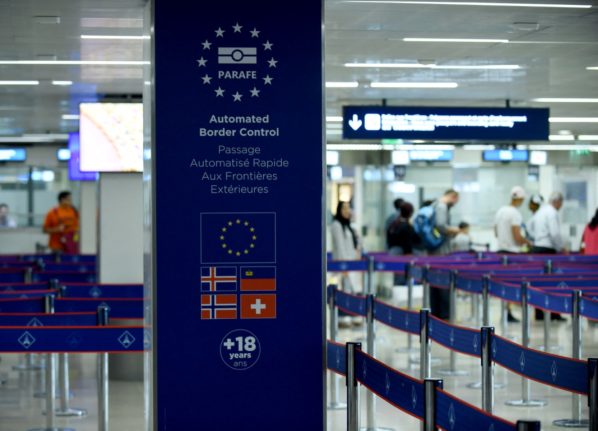What’s this all about?
While we’ve all become used to describing vaccines by the names of the companies who produce them, it turns out that the same vaccines can appear in numerous different guises.
In this instance, we’re mainly concerned with two key versions of AstraZeneca: one produced in Europe under the brand name Vaxzevria, and one produced under licence by India’s Serum Institute, which is marketed as a Covishield.
Though the brand names are different, the vaccine is identical: it is produced with the same ingredients to the same specifications. The only key difference is that the version made in India is not licensed within the EU.
Until recently, this hadn’t been much of an issue, since Covishield is largely distributed in India, Africa and the United Kingdom.
However, with the roll-out of the EU’s vaccine passport, the Indian-produced AstraZeneca vaccine has hit a snag: only vaccines approved by the European Medicines Agency (EMA) fall under the scope of the vaccine passport scheme, so travellers who’ve been immunised with Covishield have been having headaches when travelling around the EU.
What is the EU saying?
A spokesperson for the European Commission told the The Local that the acceptance of Covishield for travellers was a matter for individual Member States – such as Germany – to decide.
“At present, Covishield is not authorised for placing on the market in the EU,” they said. “However, it has completed the World Health Organisation (WHO) Emergency Use Listing process. EU Member States can therefore decide to allow entry to those vaccinated with Covishield.”
This means that, while it may not be valid for the EU-wide digital, those who have had a shot of the Indian-manufactured vaccine should nonetheless be allowed to enter certain European countries without a negative test or proof of recovery – and, depending on that country’s rules, without needing to quarantine.
READ ALSO: EXPLAINED: How to get your digital Covid vaccine pass in Germany for EU travel
This also applies to other versions of popular vaccines that have been manufactured elsewhere in the world, such as the third version of AstraZeneca – SK Bio – which is manufactured in South Korea, and other versions of Pfizer/BioNTech, Moderna and Johnson & Johnson.
OK, so what’s Austria saying?
Unlike France, Austria has said it will allow people vaccinated with Covishield to enter.
You can enter from a safe country 22 days after your first shot (but not more than three months if you have only had one shot). The immunity is deemed to last for nine months from your second shot.
This is relatively unusual in that most countries require both shots.
You must have been vaccinated with an EMA approved vaccine or one approved from the WHO.
The WHO approval requirement is also relatively rare in Europe, as it means vaccines from more manufacturers are accepted. This includes:
- Comirnaty (BioNtech/Pfizer),
- Vaxzevria/AstraZeneca, and Covishield/AstraZeneca from Serum Institute of India COVID-19
- Vaccine Janssen from Johnson & Johnson/Janssen Pharmaceuticals
- Moderna
- Sinopharm SARS-CoV-2 Vaccine (Vero Cell), Inactivated (InCoV)
- Sinovac-CoronaVac vaccine, SARS-CoV-2 Vaccine (Vero Cell), Inactivated.
You can also enter if you have recovered from the virus in the past 180 days. This can be evidenced with a medical certificate less than six months old or with an antibody certificate less than three months old.

The European version of AstraZeneca is the same as the Indian version in all but name. Photo: picture alliance/dpa/LongVisual via ZUMA Wire | Camilo Erasso
That means that travellers from the UK, India and Africa who have been inoculated with the Covishield version of the vaccine will be permitted to enter the country, though they may have some issues with onward travel to places like France, where Covishield is still unrecognised.
How do I know if I’ve been vaccinated with Covishield?
The easiest way to check if you’ve been vaccinated with Covishield is to look at your vaccination booklet and see what brand name is listed on there.
If your vaccine certificate states only AstraZeneca, you can check the batch number to find out which version you were vaccinated with.
Where else in Europe can I travel?
As of June 12th, 15 countries in Europe had officially agreed to recognise Covishield for travel, according to a tweet by WHO chief scientist Soumya Swaminathan.
In alphabetical order, these are: Austria, Belgium, Bulgaria, Finland, Germany, Greece, Hungary, Iceland, Ireland, Latvia, the Netherlands, Slovenia, Spain, Sweden and Switzerland.
However, with India’s reciprocal offer on the table and an ever-expanding list of countries agreeing to accept the vaccine, more European countries could well be added to this list in the coming weeks.



 Please whitelist us to continue reading.
Please whitelist us to continue reading.
Member comments